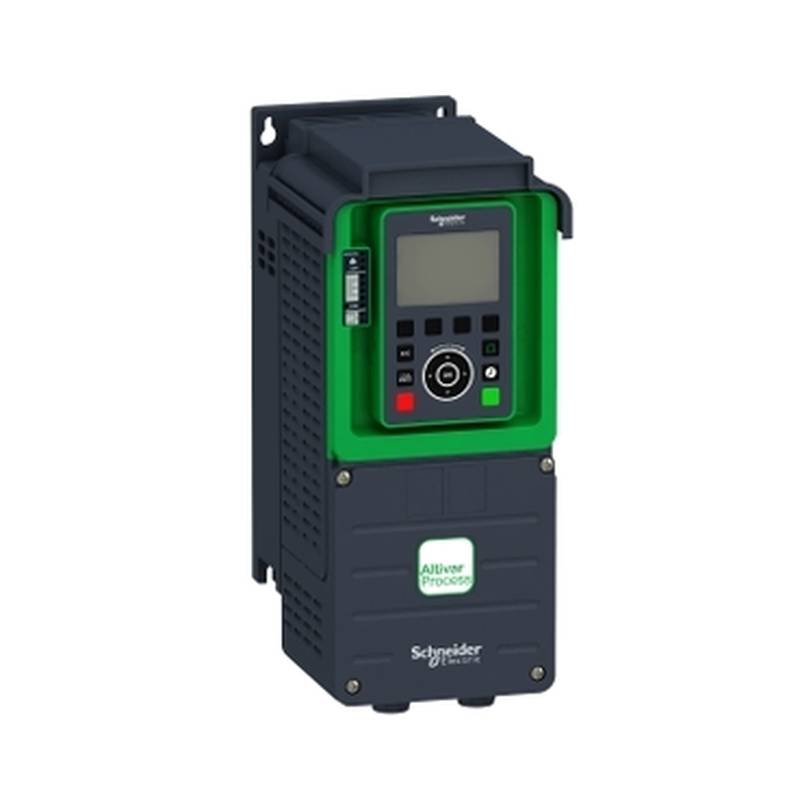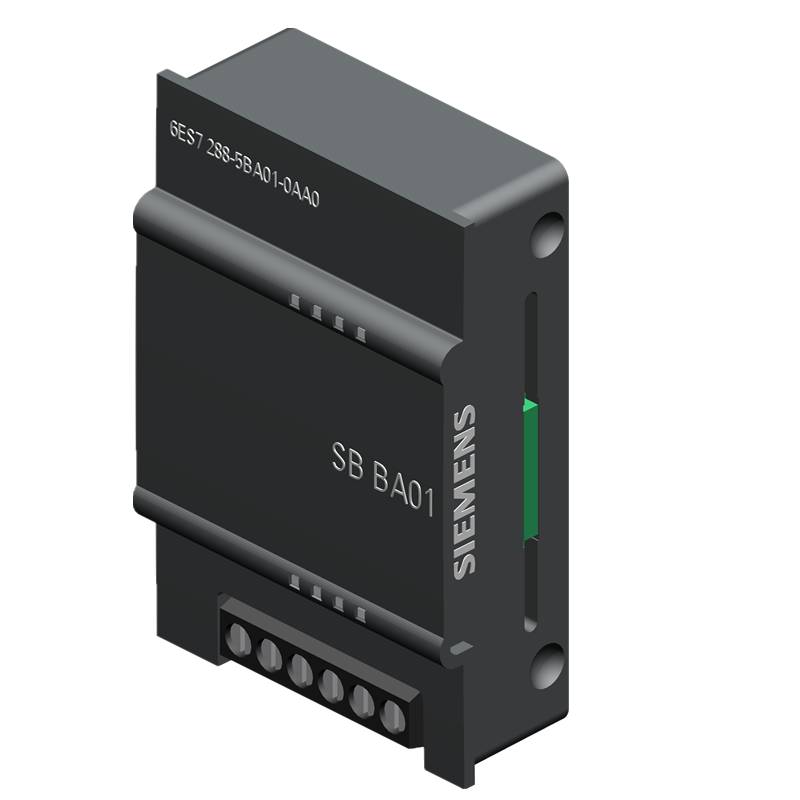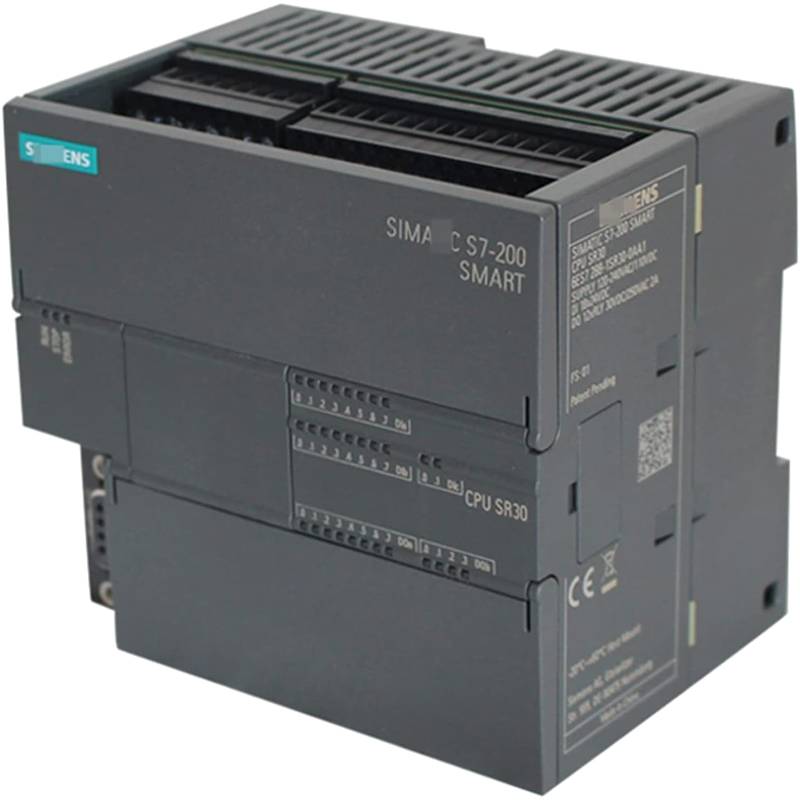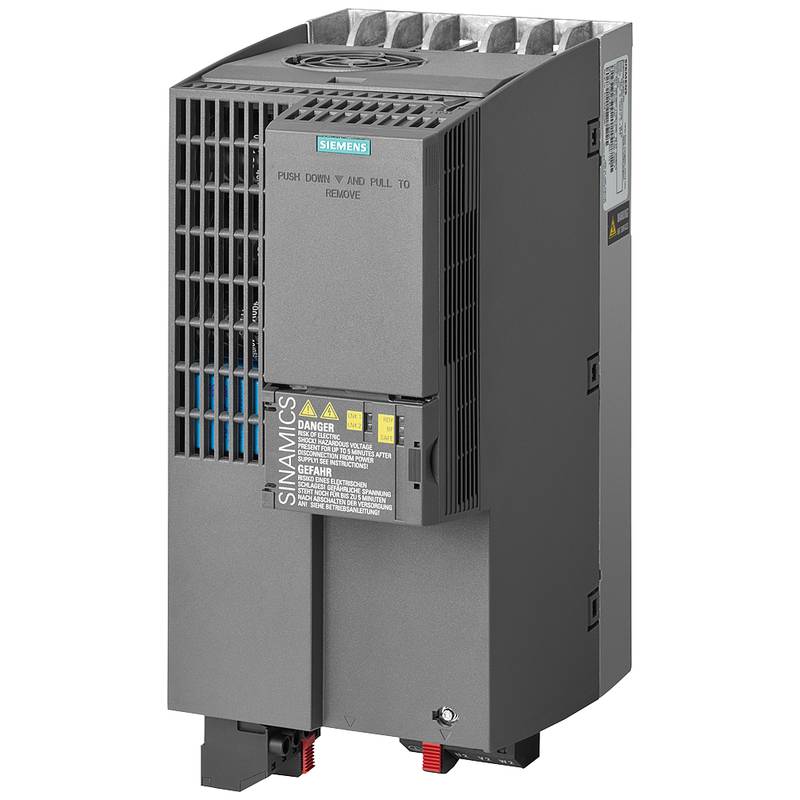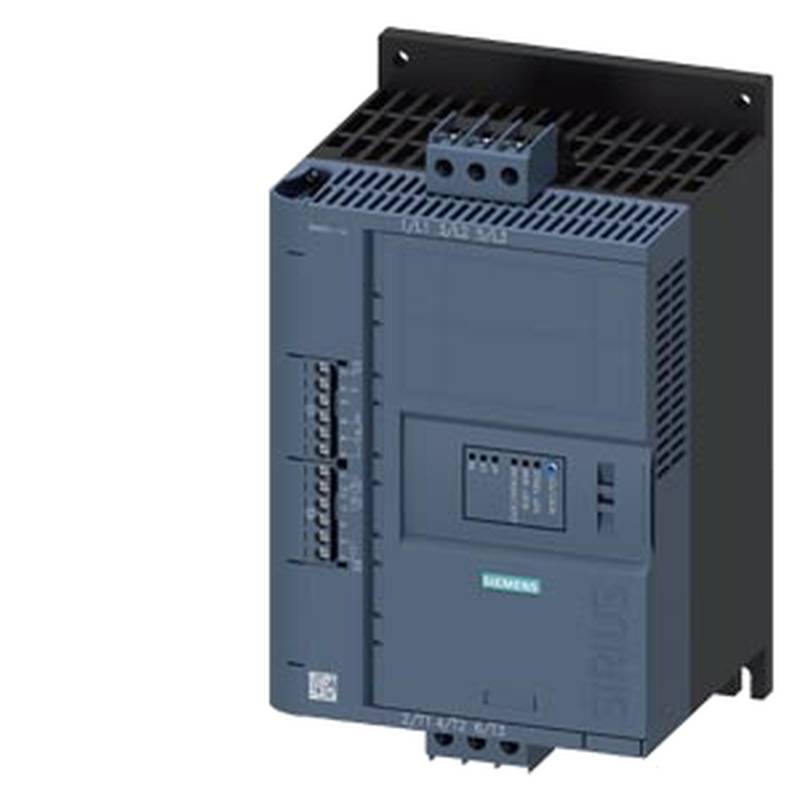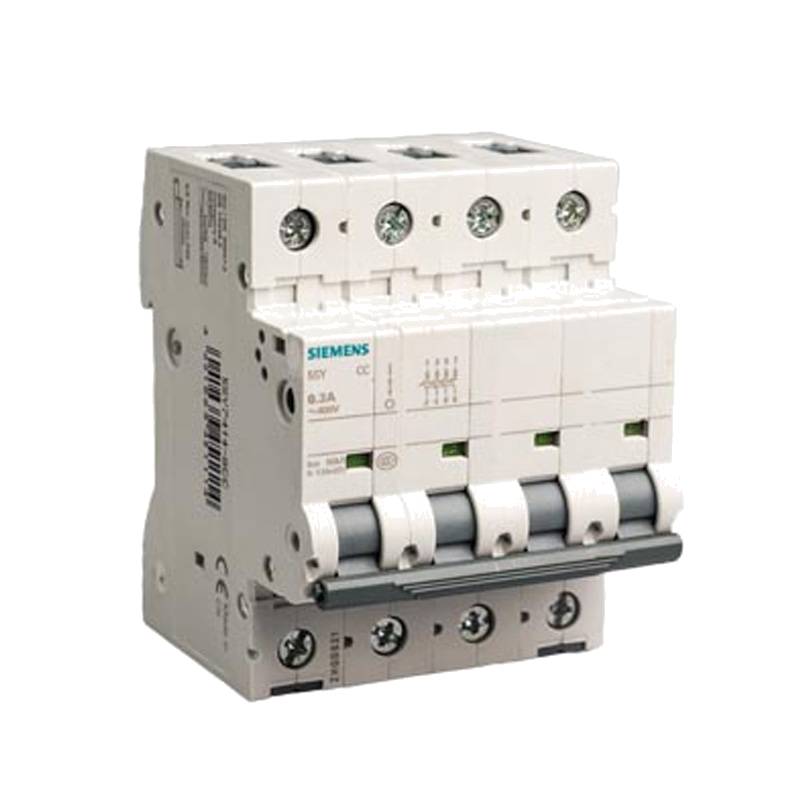
The YASKAWA CH70B4002ABBA CH700 Dedicated Application Frequency Converter, a 0.4kW unit with a 1.8A rating, represents a robust solution for precise motor control in demanding industrial environments. This frequency converter excels with its high reliability, advanced control algorithms, and compact design, making it ideal for applications requiring consistent performance and energy efficiency. Its core advantages lie in its dedicated application focus, ensuring optimized performance for specific machinery, and its ability to deliver stable output even under fluctuating load conditions. Key technical parameters include a rated power output of 0.4kW, a maximum output current of 1.8A, and compatibility with 3-phase AC motor control.
Product Specifications
| Parameter | Specification |
| :------------------ | :-------------------------- |
| Model Number | CH70B4002ABBA |
| Series | CH700 |
| Rated Power Output | 0.4 kW |
| Rated Output Current| 1.8 A |
| Input Voltage | 200-240V AC (3-Phase) |
| Output Voltage | 200-240V AC (3-Phase) |
| Control Method | V/f Control, Vector Control |
| Protection Class | IP20 |
| Mounting | Wall/Panel Mount |
| Dimensions (H x W x D)| (Refer to datasheet) |
| Weight | (Refer to datasheet) |
Core Features & Market Positioning
The YASKAWA CH700 series, including the CH70B4002ABBA, is positioned as a high-performance, application-specific drive designed to meet the rigorous demands of various industrial sectors. Its dedication to specific applications ensures that its firmware and hardware are finely tuned for optimal efficiency and control, setting it apart from more general-purpose variable frequency drives (VFDs). This specialized approach translates into superior motor performance, reduced energy consumption, and extended equipment lifespan. Yaskawa's reputation for manufacturing durable and reliable industrial automation components further solidifies the CH700's market standing as a trusted choice for critical operations.
Key Application Scenarios
This YASKAWA CH70B4002ABBA frequency converter is particularly well-suited for applications where precise speed and torque control are paramount. Common scenarios include its integration into small to medium-sized pump and fan systems, where variable speed operation can significantly improve energy efficiency and reduce wear on mechanical components. It is also frequently deployed in conveyor systems, small machine tools, and material handling equipment that require smooth acceleration and deceleration. The converter's robust design makes it a reliable choice for environments with potential for dust or moderate humidity, provided it is installed within its IP20 protection rating limitations.
Practical System Integration Guidance
Integrating the YASKAWA CH70B4002ABBA into an existing system requires careful attention to electrical connections and parameter configuration. Ensure the input power supply is within the specified 200-240V AC, 3-phase range and properly grounded. Motor wiring must be correctly terminated at the output terminals (U, V, W), and it is crucial to adhere to Yaskawa's guidelines regarding shielded or unshielded motor cables to prevent electromagnetic interference. Initial parameter setup typically involves configuring the motor's rated voltage, frequency, current, and pole number. For basic operation, setting the drive's maximum frequency and acceleration/deceleration times is often sufficient; however, advanced applications may benefit from configuring PID control loops or specific protective functions.
Operation and Risk Mitigation
Safe operation of the YASKAWA CH70B4002ABBA frequency converter mandates adherence to all electrical safety standards and the manufacturer's manual. Always ensure power is completely disconnected and discharged before performing any wiring, maintenance, or inspection. Overcurrent (OC) and Overvoltage (OV) are common fault codes that can indicate improper motor selection, excessive load, or rapid deceleration. Under-voltage (UV) faults may point to input power issues. To mitigate risks, properly size the drive for the motor load, ensure adequate ventilation around the unit, and regularly inspect wiring for signs of wear or damage. Familiarizing yourself with the CH700's fault code table in the user manual is essential for prompt troubleshooting.
Scalability & Long-Term Value
While the CH70B4002ABBA is a dedicated unit, its integration within the broader Yaskawa ecosystem offers long-term value. It is designed to be compatible with various Yaskawa motor offerings, allowing for a cohesive drive-motor package. For businesses looking to scale their automation efforts, the CH700 series benefits from Yaskawa's commitment to industrial network integration. While this specific model may not have built-in advanced communication options, its foundational reliability and efficiency contribute to overall operational uptime and reduced maintenance costs. Future upgrades might involve migrating to higher-capacity CH700 models or incorporating Yaskawa's communication modules if the application demands expanded network connectivity.
Frequently Asked Questions
1. What are the primary advantages of the YASKAWA CH70B4002ABBA?
This converter offers precise motor speed control. It enhances energy efficiency by matching motor output to demand. Its robust design ensures high operational reliability in industrial settings.
The dedicated application focus optimizes performance for specific tasks. It minimizes wear on connected machinery through smooth operation. This leads to reduced maintenance and extended equipment life.
Its compact form factor facilitates easy installation in tight spaces. The 0.4kW rating is ideal for smaller, yet critical, motor applications. It provides stable performance under varying load conditions.
2. How do I properly install the CH700 frequency converter?
Mount the unit in a well-ventilated area, avoiding direct sunlight. Ensure the ambient temperature stays within specified limits for optimal performance. Securely fasten the converter to a stable surface using appropriate hardware.
Connect the input power supply (200-240V AC, 3-phase) to the L1, L2, L3 terminals. Ensure proper grounding for safety and to prevent electrical noise. Verify all connections are tight and according to the wiring diagram.
Connect the motor to the U, V, W output terminals. Use motor cable lengths recommended by Yaskawa to minimize signal interference. Double-check polarity and phase sequence before applying power.
3. What technical specifications are crucial for the CH70B4002ABBA?
The drive has a rated power output of 0.4kW. Its maximum continuous output current is 1.8A. This is vital for motor selection to avoid overloading.
It operates on a 200-240V AC, 3-phase input voltage. The output voltage matches the input, suitable for standard industrial motors. This ensures compatibility with typical power grids.
Control methods include V/f and basic vector control. It features an IP20 protection rating. This indicates protection against solid objects larger than 12.5mm, but not water.
4. What are common applications for the YASKAWA CH700 series?
These converters are frequently used for variable speed pumps. They are ideal for optimizing fan performance and reducing energy consumption. This applies to HVAC systems and industrial ventilation.
Conveyor systems benefit from precise speed adjustments. Material handling equipment requiring controlled starts and stops utilize these drives. Small machine tools also employ them for spindle speed control.
Other applications include small processing machinery and automated assembly lines. Any setup needing adjustable motor speed and torque will find value. Their reliability suits continuous operation needs.
5. How can I troubleshoot common fault codes on this converter?
Refer to the CH700 user manual for a complete list of fault codes. For an OC (Overcurrent) fault, check for motor overload or short circuits. Reduce acceleration time or verify motor parameters.
An OV (Overvoltage) fault might indicate regeneration or rapid deceleration. Consider extending deceleration time or adding a braking resistor if needed. Verify input power stability.
An OL (Overload) fault typically relates to motor thermal overload. Allow the drive to cool or reduce the load. Ensure the drive's current limit is set correctly for the motor.
6. What is the IP rating of the CH70B4002ABBA and its implications?
The IP20 rating means it is protected against finger access. It also guards against solid objects larger than 12.5 mm. This offers basic protection for internal components.
However, IP20 provides no protection against water ingress. Therefore, the converter must be installed in a dry environment. Avoid areas with high humidity or direct water spray.
This rating makes it suitable for control cabinets or protected areas. It necessitates careful consideration for environments prone to dust or moisture. Proper enclosure is key for longevity.
7. Can the YASKAWA CH70B4002ABBA be used with single-phase motors?
No, this specific model is designed for 3-phase AC motors. It requires a 3-phase input power supply. It outputs a 3-phase voltage to drive standard industrial 3-phase motors.
Using it with a single-phase motor would require a phase converter. However, this is generally not recommended by Yaskawa for optimal performance. It would negate the drive's intended benefits.
Always ensure your motor is a 3-phase type and matches the drive's specifications. Consult the motor nameplate and drive manual for compatibility.
8. What are the basic programming steps for this frequency converter?
First, ensure the drive is powered off before making parameter changes. Access the parameter menu using the drive's keypad interface. Set fundamental motor data like voltage, frequency, and poles.
Configure acceleration and deceleration times to suit the application. Adjust maximum and minimum speed limits as necessary. Test the basic run command and speed control.
Advanced parameters like PID control or special functions require deeper understanding. Always consult the user manual for detailed explanations and safe setup procedures.
9. How does this drive contribute to energy savings?
By precisely controlling motor speed, the drive avoids running motors at full speed unnecessarily. This directly reduces energy consumption, especially in variable load applications. Lower speed equals lower power draw.
It allows for soft starting and stopping, reducing peak current demands. This can lead to lower electricity bills and reduced stress on the power infrastructure. Energy savings are directly proportional to the reduction in motor speed.
The V/f control and vector control capabilities optimize motor efficiency across a range of operating speeds. This ensures that the motor operates at its most efficient point for the given load.
10. What is the warranty period for YASKAWA industrial products like this?
Yaskawa typically offers a standard warranty period on their industrial drives. This usually covers defects in materials and workmanship under normal use. The exact duration can vary by region and specific product model.
Customers should consult their purchase agreement or Yaskawa's official website for precise warranty terms. Registering the product after purchase is often recommended to activate the warranty. Keep purchase receipts as proof of date.
Warranty claims generally require an evaluation by Yaskawa or an authorized service center. Unauthorized modifications or improper installation can void the warranty. Service and support are available through Yaskawa's network.



















